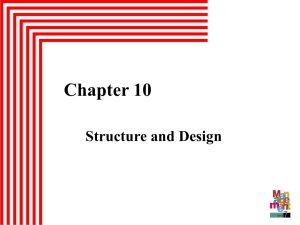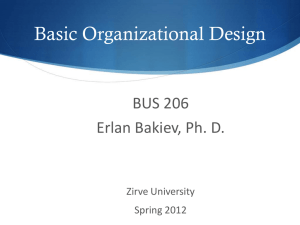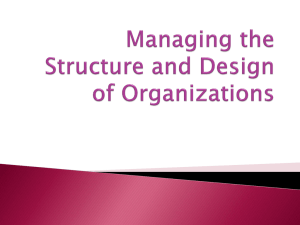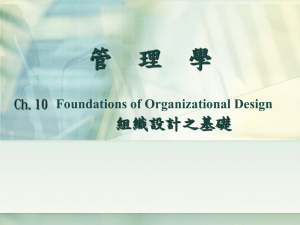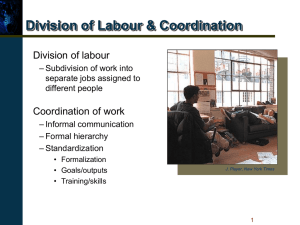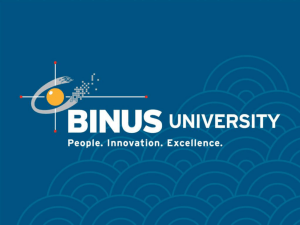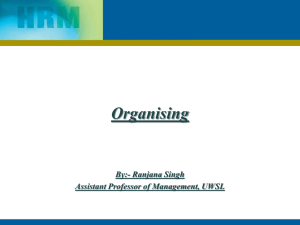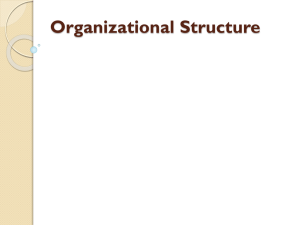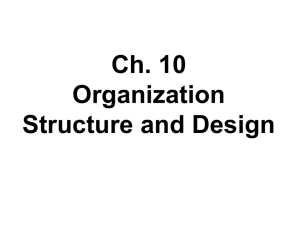Organizational Structure: Chapter Summary & Key Concepts
advertisement
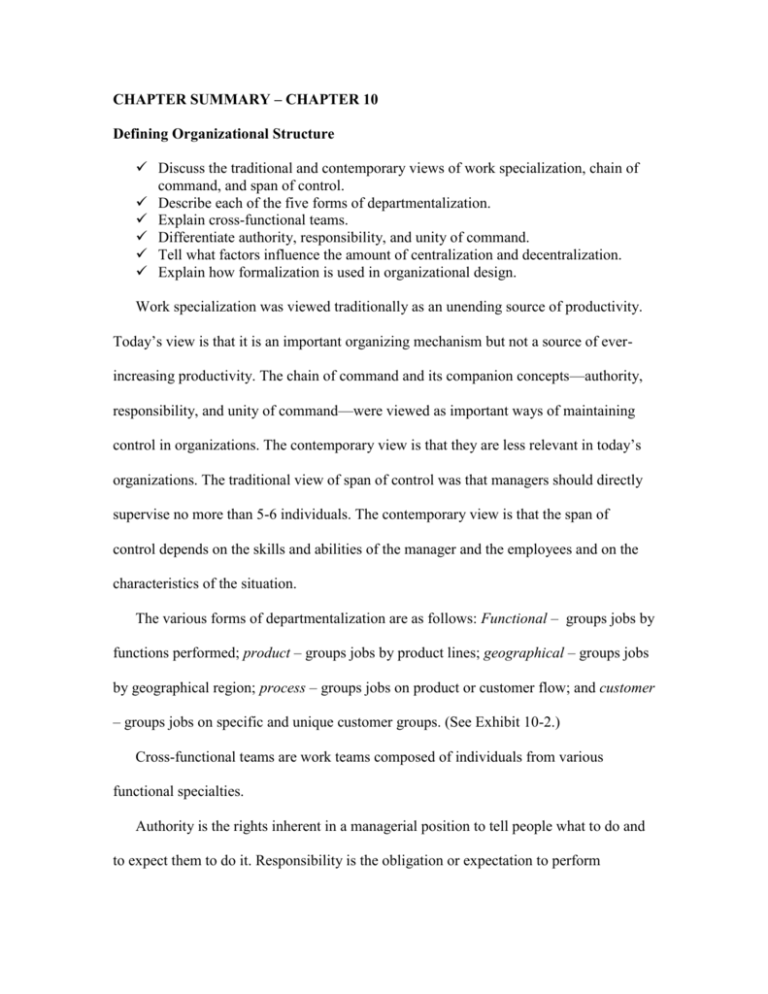
CHAPTER SUMMARY – CHAPTER 10 Defining Organizational Structure Discuss the traditional and contemporary views of work specialization, chain of command, and span of control. Describe each of the five forms of departmentalization. Explain cross-functional teams. Differentiate authority, responsibility, and unity of command. Tell what factors influence the amount of centralization and decentralization. Explain how formalization is used in organizational design. Work specialization was viewed traditionally as an unending source of productivity. Today’s view is that it is an important organizing mechanism but not a source of everincreasing productivity. The chain of command and its companion concepts—authority, responsibility, and unity of command—were viewed as important ways of maintaining control in organizations. The contemporary view is that they are less relevant in today’s organizations. The traditional view of span of control was that managers should directly supervise no more than 5-6 individuals. The contemporary view is that the span of control depends on the skills and abilities of the manager and the employees and on the characteristics of the situation. The various forms of departmentalization are as follows: Functional – groups jobs by functions performed; product – groups jobs by product lines; geographical – groups jobs by geographical region; process – groups jobs on product or customer flow; and customer – groups jobs on specific and unique customer groups. (See Exhibit 10-2.) Cross-functional teams are work teams composed of individuals from various functional specialties. Authority is the rights inherent in a managerial position to tell people what to do and to expect them to do it. Responsibility is the obligation or expectation to perform assigned duties. Unity of command states that a person should report to only one manager. Factors that influence the amount of centralization-decentralization include such things as the environment, experience of managers, nature of the decision, size of the company, and so forth. (See Exhibit 10-4 for a full list.) Formalization concerns the organization’s use of standardization and strict rules to provide consistency and control. Organizational Design Decisions Contrast mechanistic and organic organizations. Explain the relationship between strategy and structure. Tell how organizational size affects organizational design. Discuss Woodward’s findings on the relationship of technology and structure. Explain how environmental uncertainty affects organizational design. A mechanistic organization is a rigid and tightly controlled structure. An organic organization is highly adaptive and flexible. (See Exhibit 10-5.) An organization’s structure should support the strategy. If the strategy changes, the structure also should change. An organization’s size can affect its structure up to a certain point. Once an organization reaches a certain size (around 2,000 employees), it’s fairly mechanistic. Woodward found that an organization’s technology can affect its structure. An organic structure is most effective with unit production and process production technology. A mechanistic structure is most effective with mass production technology. (See Exhibit 10-6.) The more uncertain an organization’s environment, the more it needs the flexibility of an organic design. Common Organizational Designs Contrast the three traditional organizational designs. Explain team, matrix, and project structures. Describe the design of virtual and network organizations. Discuss the organizational design challenges facing managers today. A simple structure is one with low departmentalization, wide spans of control, authority centralized in a single person, and little formalization. A functional structure groups similar or related occupational specialties together. A divisional structure is made up of separate business units or divisions. (See Exhibit 10-7.) In a team structure, the entire organization is made up of work teams. The matrix structure assigns specialists from different functional departments to work on one or more projects being led by project managers. A project structure is one in which employees continuously work on projects. (See Exhibit 10-8.) A virtual organization consists of a small core of full-time employees and outside specialists temporarily hired as needed to work on projects. A network organization is an organization that uses its own employees to do some work activities and networks of outside suppliers to provide other needed product components or work processes. Three organizational design challenges face today’s managers: keeping employees connected, building a learning organization, and managing global structural issues.
